Costa Brava is a stunning region in Catalonia that extends from the Mediterranean coast to the majestic Pyrenees, which form a natural border with France. Costa Brava loosely translates as ‘wild coast’, a reference to the rocky coastline with its spectacular cliffs and countless coves, a favourite haunt for pirates in the 17th century. Famous for its beaches and sunshine, Costa Brava is a treasure trove of historic, cultural and gastronomic delights! A Costa Brava road trip is the best way to explore the region at your own leisure – mix up beach time with a wander through medieval towns, and visits to cultural attractions with hikes along the coast or in the mountains. In between, you’ll feast on some of the best food and wines that Spain has to offer! Here’s my guide to the best places to visit in Costa Brava.
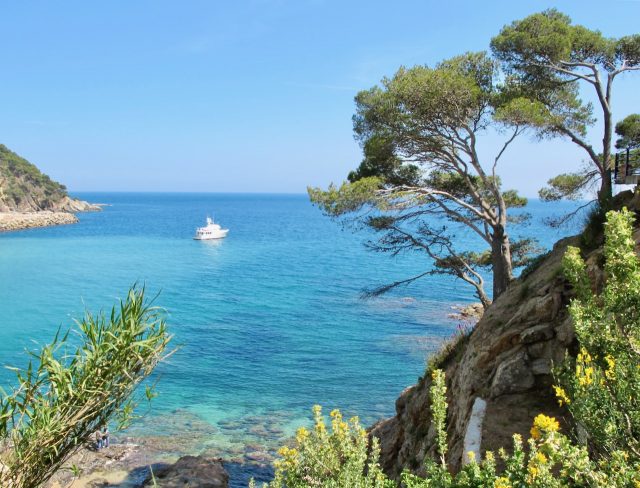
This Costa Brava guide contains links to three services I often use myself and can recommend: Skyscanner (flights), Booking.com (hotel bookings), Rentalcars.com (car hire) and GetYourGuide (easy-to-book tours). If you make a booking via one of these services, I will receive a small commission (at no extra cost to you). These commissions help me to maintain my blog and share more travel experiences with you.
The ultimate guide to the Best of Costa Brava
I’ve visited Costa Brava several times and explored the region quite extensively. Based on these trips, I’ve compiled this guide featuring the best places to visit on a road trip in Costa Brava including my recommendations for hotels and restaurants. You can do this in 1-2 weeks but I suggest taking your time to enjoy these places. I’ve also included a suggested 15-day ‘Best of Costa Brava‘ self-drive itinerary below.
The line in the map denotes the sequence of the places described in this guide: starting in Girona, then the coast (south to north) before moving inland towards the Pyrenees. You can pick up a rental car at Barcelona Airport or in Girona. Find flights to Barcelona with KLM.
Girona
Girona is less than a two-hour drive from Barcelona. Often overlooked by tourists, Girona is a gorgeous city located smack in the middle of the confluence of four rivers. As a consequence of its strategic location, Girona was occupied at different times in its history by the Romans, Visigoths, Moors and the French. Its medieval core is still intact, as are large parts of its medieval city walls. Fans of the Game of Thrones series shouldn’t miss Girona!
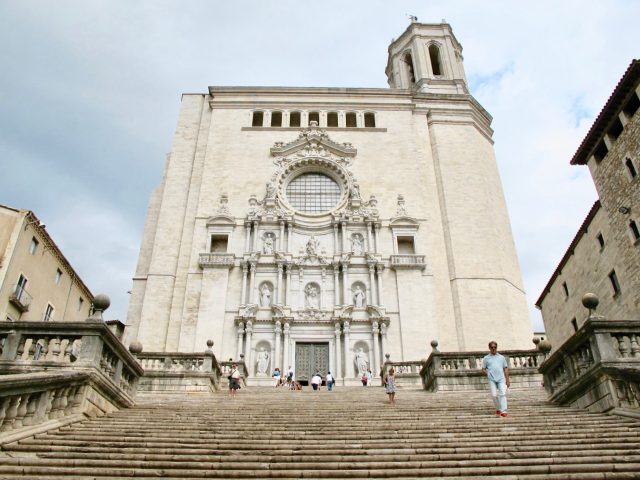
The highlights in Girona include walking its medieval walls, exploring the old Jewish Quarter and visiting the magnificent Cathedral. Read about things to see in Girona and walking the medieval walls of Girona.
Search for accommodations in Girona.
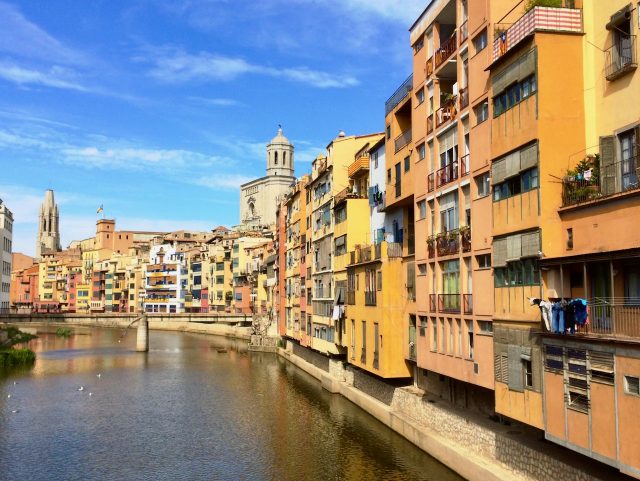
In the city centre, grab a meal at Le Bistrot, a popular restaurant that serves traditional Catalan fare. In addition, scenes from the Game of Thrones were filmed at the steps right outside the restaurant. There’s a Game of Thrones walking tour which fans can join.
Just outside Girona, you’ll find one of the world’s best restaurants: El Celler de Can Roca. A meal here is a truly extraordinary (not to mention unforgettable) experience! Read about my meal at El Celler de Can Roca.
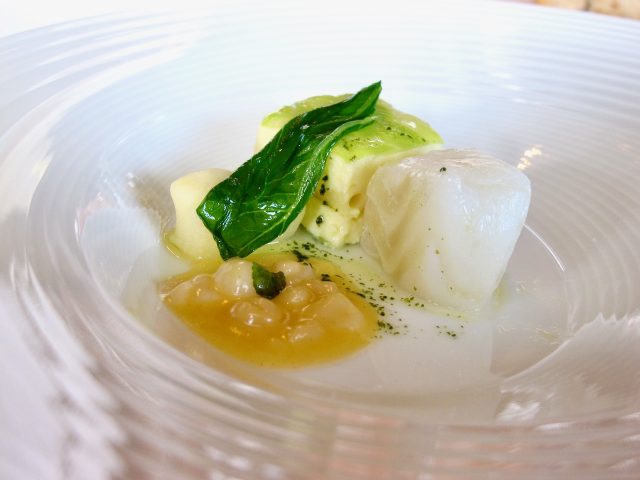
The coast (south to north)
The Costa Brava coast is what most visitors come for, and rightfully so. You’ll find picturesque towns, nature parks, sandy beaches and secluded coves lapped by the crystal-clear water of the Mediterranean Sea.
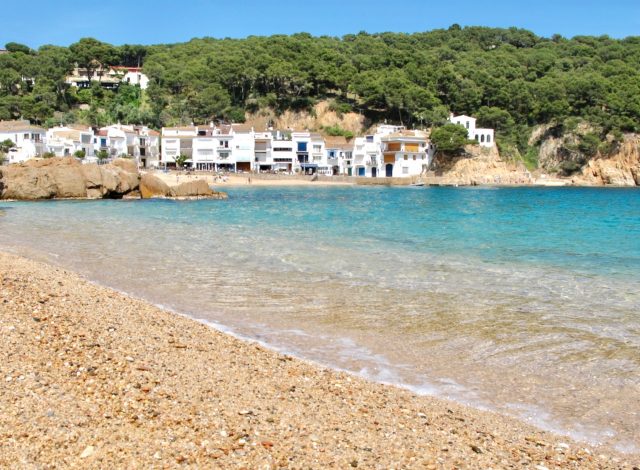
Blanes – Lloret de Mar – Tossa de Mar
The stretch between Blanes and Lloret de Mar, with its beaches, hotels, restaurants and bars is a popular holiday spot but look a bit further and you’ll find quieter beaches with golden sands and lush nature reserves. Visit the beautiful Jardins de Santa Clotilde park for a tranquil stroll and gorgeous sea views, hike through the Massis de les Cadiretes nature reserve or go on a leisurely coastal drive along the edges of the reserve (heading north along the coast from Tossa de Mar). Beautiful beaches in the area include Cala Sa Boadella (a section of which is for nudists) and Cala Treumal.
Search for accommodations in/around Lloret de Mar.
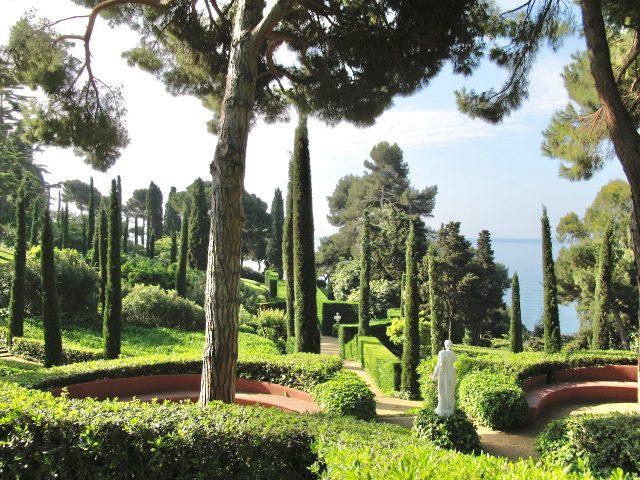
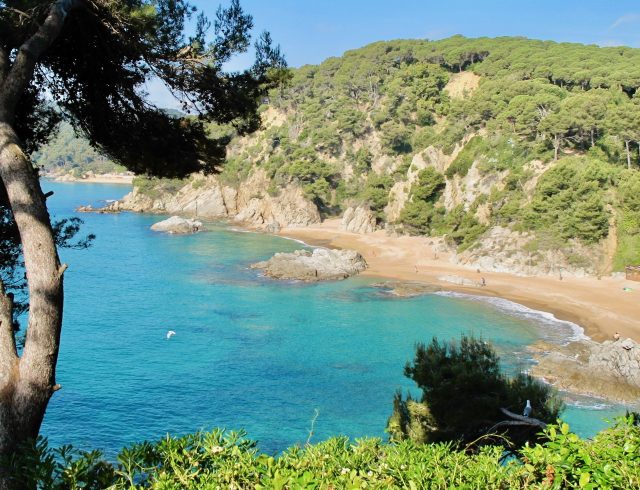
Tossa de Mar, with its wide beaches against the backdrop of an impressive castle, is a lovely town to visit. Don’t miss the 12th century Castell de Tossa de Mar with its fortification walls and towers.
Search for accommodations in Tossa de Mar.
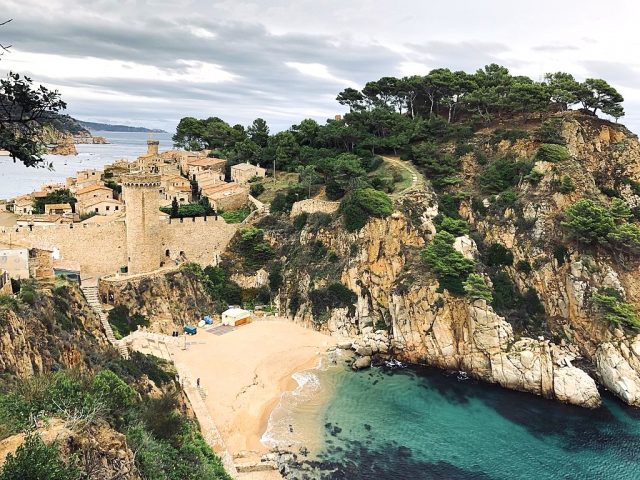
Palamós and beyond
Palamós is a bustling fishing town with long beaches, a harbour packed with fishing boats and a yacht marina. A visit to the Fish Museum (Museu de la Pesca) and fish auction at the harbour is a fascinating experience.
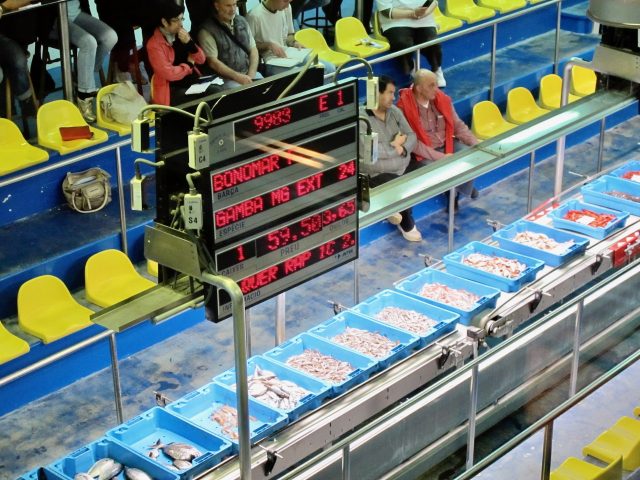
The coast northwest of Palamós is full of little coves with gorgeous, secluded beaches backed by cliffs and pine trees. Suggested beaches include La Fosca, Cala s’Alguer, Platja de Castell and Cala Estreta.
Costa Brava coastal trails
The rocky cliffs between these beaches are a hikers paradise! Part of the Cami de Ronda (Costa Brava trails that wind along the coast for about 200 km!), this particular stretch is famous for its stunning sea views and towering cliffs.
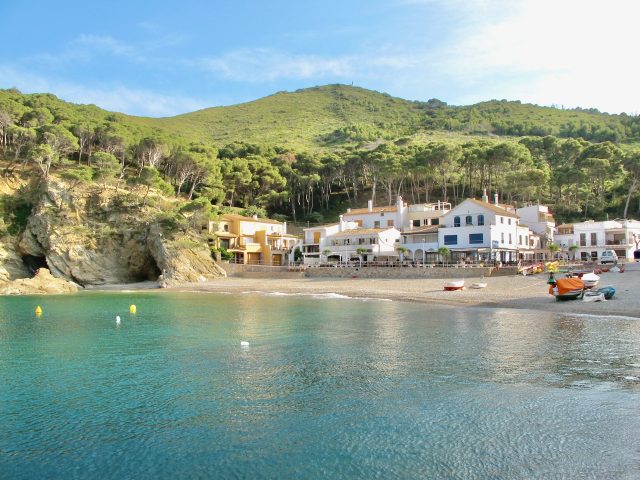
Calella de Palafrugell to Begur
One of the most scenic parts of the Costa Brava coast stretches from Calella de Palafrugell and Llafranc, past Tamariu, to Begur. This part of the coast consists of beautiful beaches, rocky inlets, pine-covered cliffs and picturesque towns and villages. The Cami de Ronda continues along this stretch of the coast.

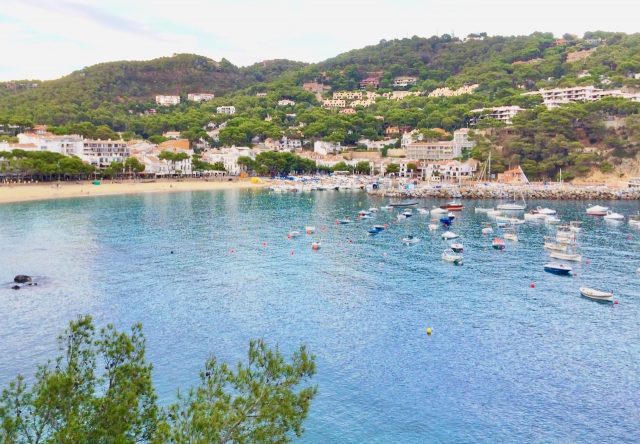
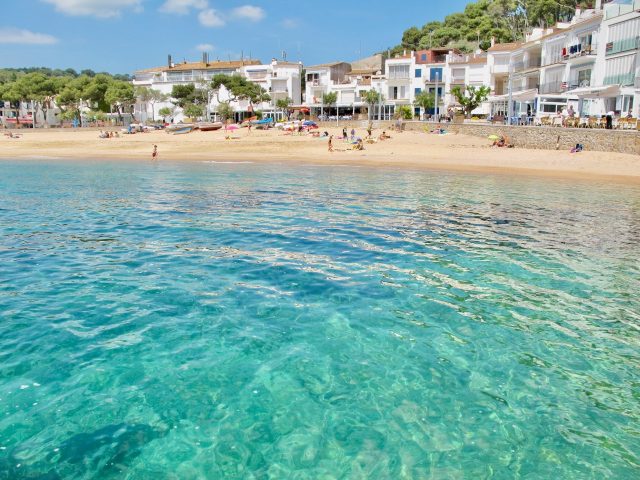

There’s a multitude of charming hotels and excellent restaurants along the coast. My favourite hotels in this area, which also have outstanding restaurants, are Sant Roc (Calella de Palafrugell), Casamar (Llafranc), El Far (Llafranc) and Aigua Blava (near Begur).
Search for accommodations in Calella de Palafrugell or Llafranc.
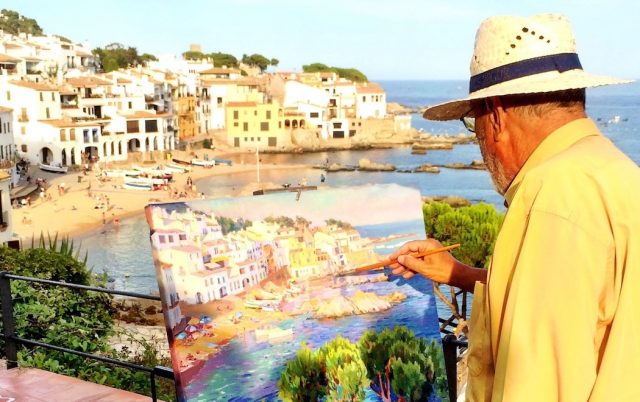
Begur
Begur is a hillside town overlooked by a 16th century castle. There’s a lovely square packed with terraces, and cobblestone alleys with a good choice of restaurants and cafés, some tucked away in beautiful courtyards.
Search for accommodations in Begur.
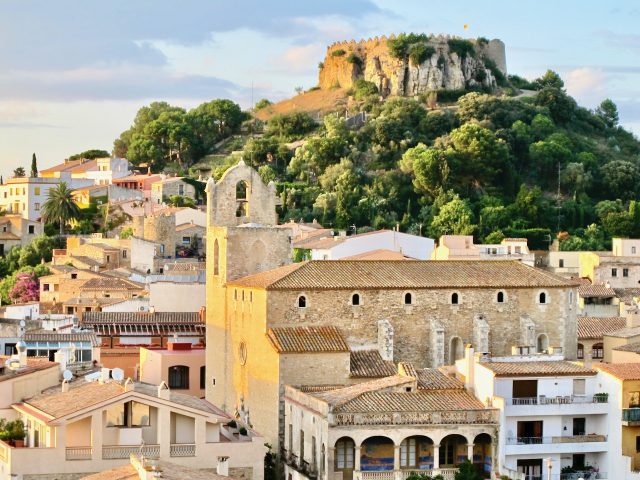
From Begur, take the road to Sa Tuna, a hamlet on the coast with a small beach. The road winds through quiet neighbourhoods and thick forests, and offers beautiful vistas of the rugged coast. Check out the fabulous Cap Sa Sal Hotel for a romantic stay or a top-notch meal.
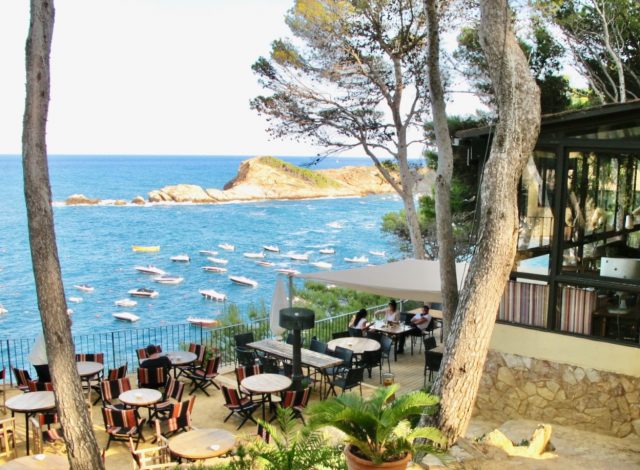
Baix Empordá
Close to this part of the coast, you’ll find the agricultural Baix Empordá region; a colourful patchwork of fields, fruit orchards and beautiful medieval villages.
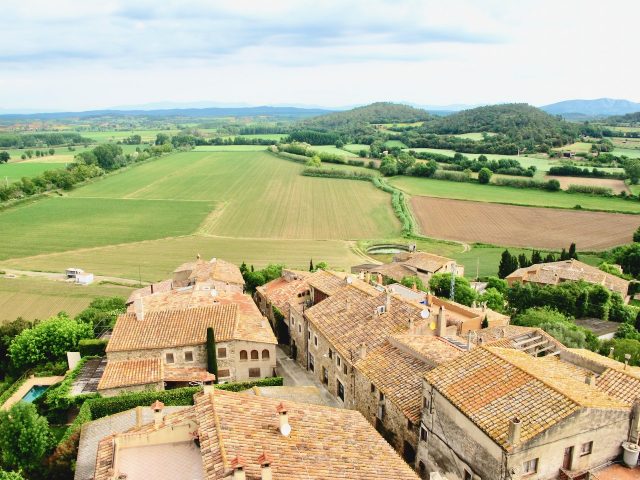
Peratallada
Peratallada is a fortified medieval town that’s definitely worth a visit. The town, with its 11th century castle (now home to an amazing luxury hotel), 13th century Romanesque church, gorgeous cobblestone streets and quaint squares, is a popular place for day-trippers who come here to soak up the medieval atmosphere but stick around in the evenings for a romantic dinner at one of the numerous restaurants. I can recommend Restaurante Candelaria! Peratallada also makes for a good base from which to explore the Baix Empordá. Search for accommodations in Peratallada.
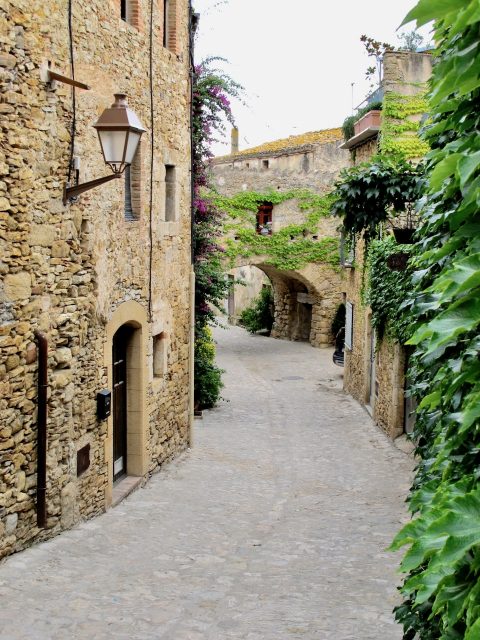
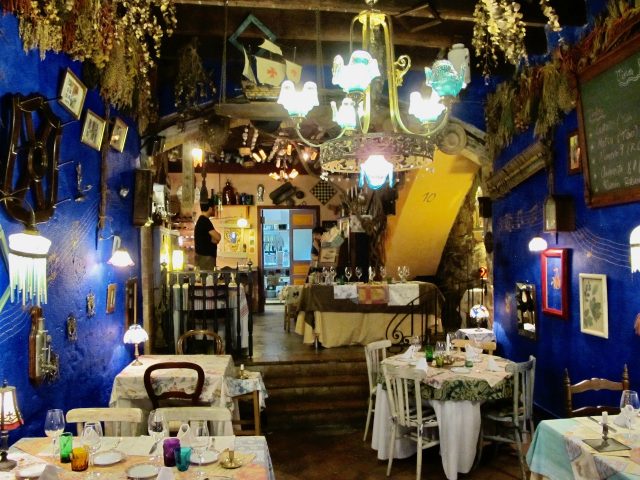
For a dose of indulgence, I can recommend the Mas de Torrent Hotel and Spa, which is situated a short drive away from Peratallada. The hotel also has an excellent restaurant! Read about my stay at Mas de Torrent.
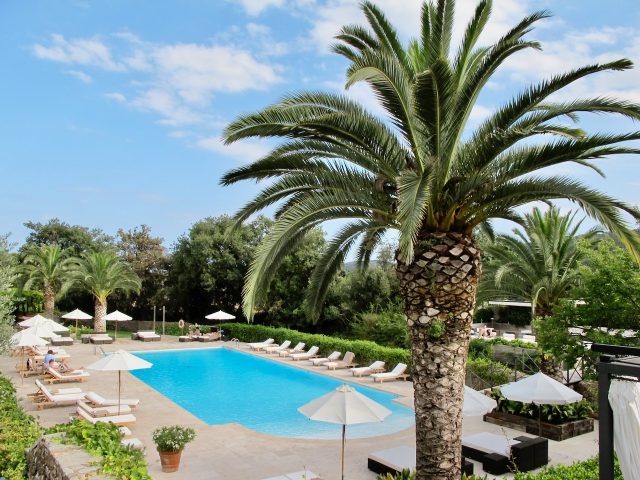

Pals
Pals is one of the most impressive medieval towns in Costa Brava. Situated in the Baix Empordá region, a short distance from Begur, Pals’ main attraction is its beautifully restored medieval quarter. Pals is also home to Vicus, a restaurant where I’ve had some truly memorable meals!
Search for accommodations in Pals.

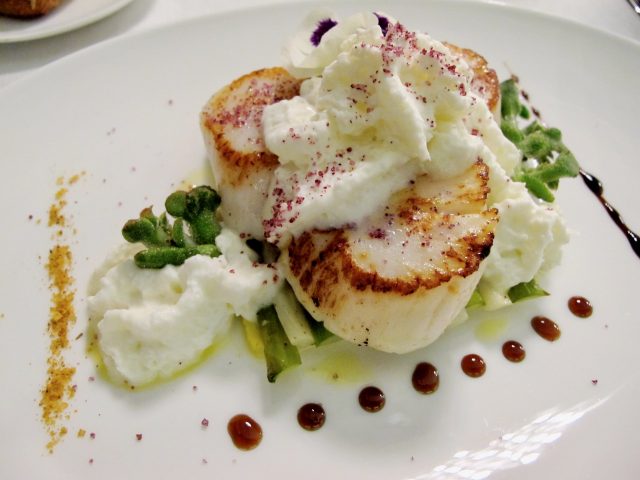
Púbol
Púbol is another attractive town to visit. The main attraction is the Castell Gala Salvador Dalí, a castle that the great painter bought for his wife, Gala. The castle forms one of the three Dalí museums in Costa Brava (known as the ‘Dalí Triangle’ and also includes the Dalí Theatre Museum in Figueres and Casa Dalí in Port Lligat).
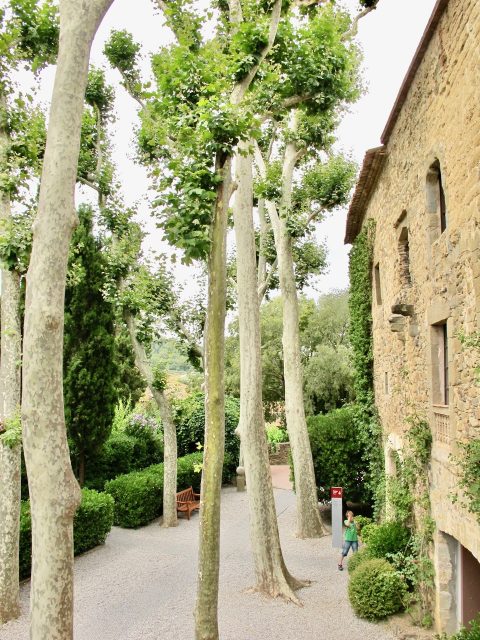

Monells
Monells lies just east of Púbol and is another atmospheric medieval village that’s worth visiting, if only to explore its arched streets and arcades.
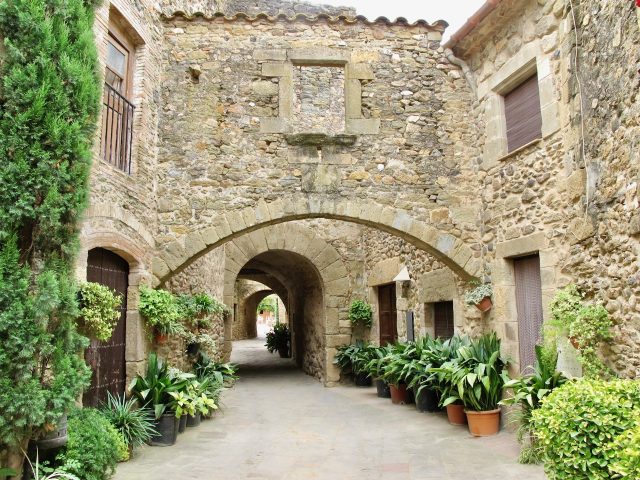
If you fancy staying in a castle, look up Castell d’Empordà near Púbol, a beautifully-restored castle that overlooks the Empordà plains. Its restaurant, Drac, is another terrific dining option I can highly recommend!
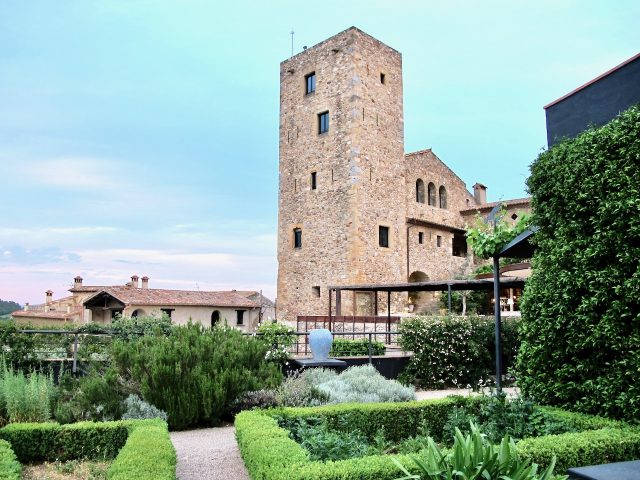
Also nearby is the village of Colomers, where hot-air balloon flights over Costa Brava are operated from. It’s a wonderful experience that I highly recommend. You can make a booking here.
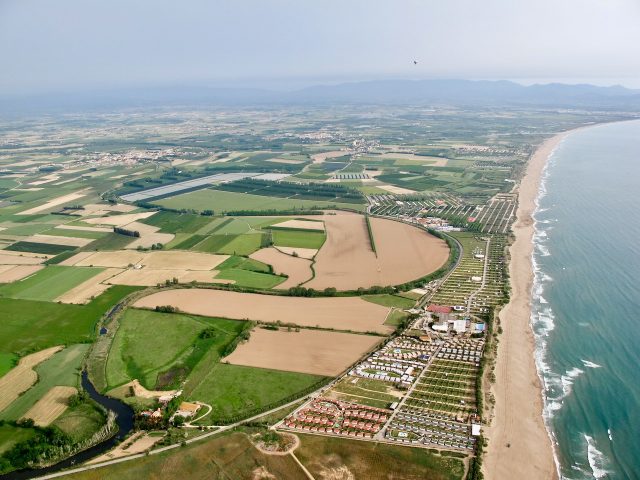
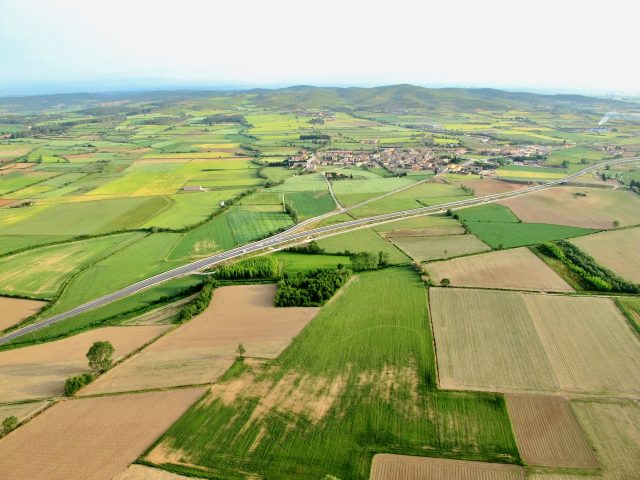
Begur to Roses
North of Begur, the hills make way for broad plains and long stretches of sandy beaches. There are also several golf resorts here such as the Empordà Golf Club and La Costa Golf Beach Resort. Nature lovers will enjoy Aiguamolls del Baix Empordà, a nature reserve with wetlands that’s great for bird-watching, and beaches with a stunning view of the jagged tops of the Illes Medes islands.
Illes Medes
Illes Medes is a marine reserve consisting of 7 rocky islets. There’s abundant marine life to be seen, which visitors can enjoy on a snorkelling or submarine trip. The Illes Medes boat trips depart from the L’Escartit harbour.
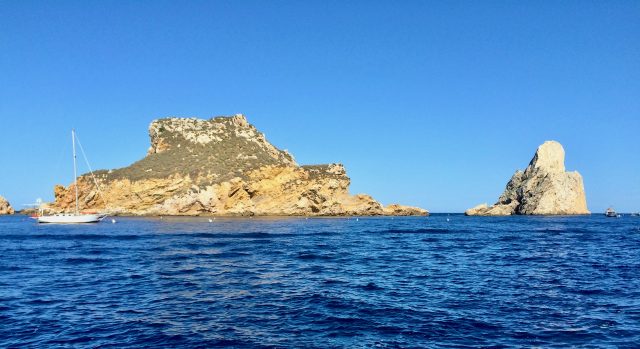
Further north, you’ll find another nature reserve worth visiting for its coastal cliffs and beautiful sea views: Parc Natural del Montgri. Near the town of L’Escala, history lovers will enjoy the Museu d’Arqueologia de Catalunya – Empúries (Catalan Archeological Museum Empúries) where ancient Greek and Roman ruins have been excavated.
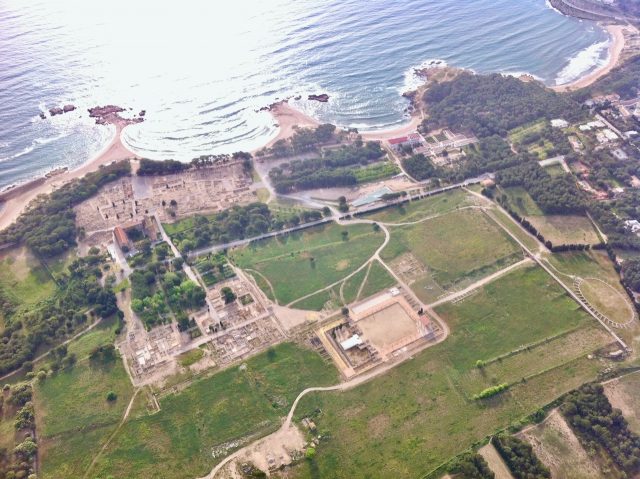
At the sweeping Gulf of Roses, you’ll find, along its seemingly endless beaches, a myriad of camping grounds and another beautiful nature reserve: Parc Natural dels Aiguamolls de l’Empordà. The protected wetlands in this park are famous for its bird-watching opportunities.
In nearby Empuriabrava are two attractions for those who love to ‘fly’: the Windoor Realfly experience and Skydive Empuriabrava! I’ve experienced both and I’ll never forget my Costa Brava skydive!
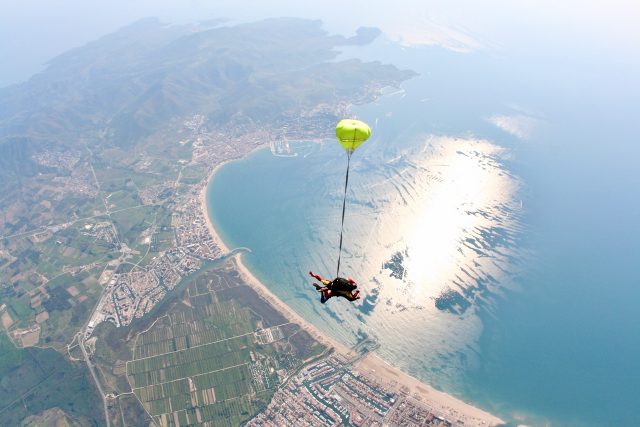
Castelló d’Empúries
Also worth a visit is the little town of Castelló d’Empúries, with its medieval centre. Stroll around its atmospheric streets and visit the impressive Basilica of Santa Maria. Every year, the town hosts the Terra de Trobadors medieval festival which attracts medieval enthusiasts from around the world.
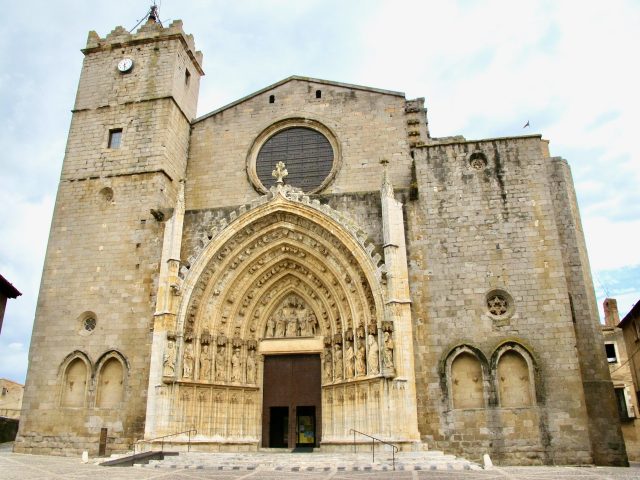
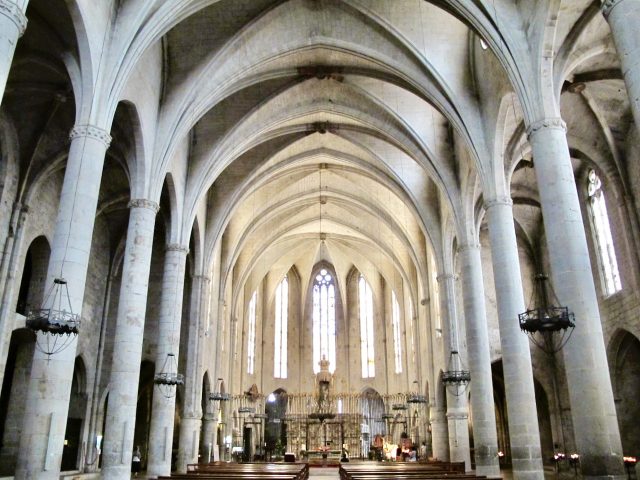
Roses
At the top of the Gulf of Roses is the town of Roses, a lively town with a long beach boulevard lined by hotels and restaurants. There are various historical sites which can be visited such as the Citadel and the Trinity Castle. Head up to Puig Rom (a reasonable hike) to visit several other archeological sites as well as to enjoy the stunning views of the gulf.
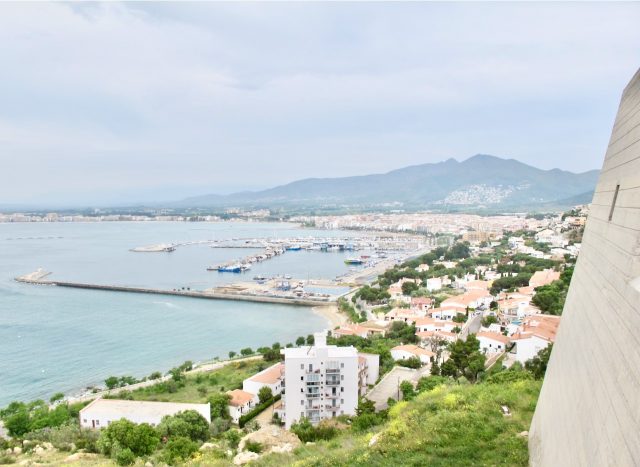
From Roses, the Canyelles road curls its way along the coast past cliffs, coves and smaller beaches. There are various upscale hotels here such as Hotel Vistabella and Almadraba Park Hotel which offer beautiful views of the gulf.
Search for accommodations in Roses.
Cap de Creus
Northwest of Roses, the Cap de Creus peninsula beckons. A rocky, mountainous region of wind-swept slopes covered by thick gorse, quaint coastal villages, and crystal-clear coves, Cap de Creus is perfect for a leisurely drive or lengthy hikes. Read more about places to visit in Cap de Creus.
Search for accommodations in Cap de Creus.
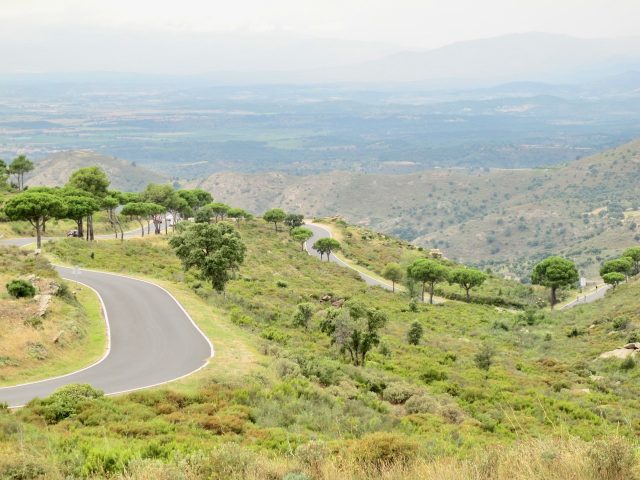
Cadaqués
The charming fishing village of Cadaqués, with its whitewashed houses and gorgeous harbour, is famed as being a favourite haunt for artists and writers, and shouldn’t be missed. It also makes for a great base from which to explore the rest of the peninsula.
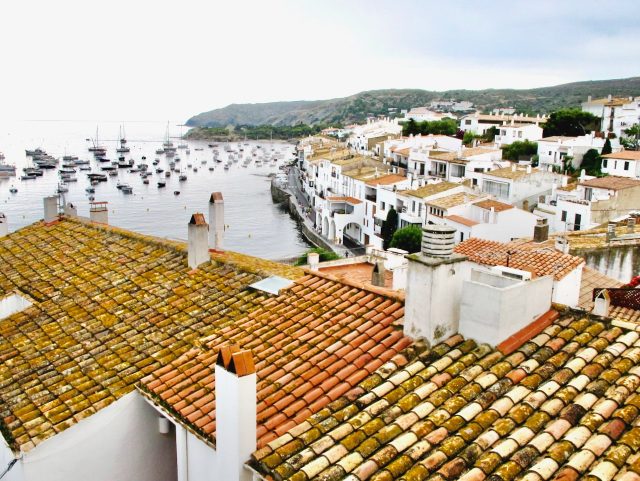
In Cadaqués, drop by at Can Rafa for a great meal. The restaurant is owned by the Martín Faíxo family who also own Mas Perafita, a gorgeous winery/B&B in the hills of Cap de Creus.
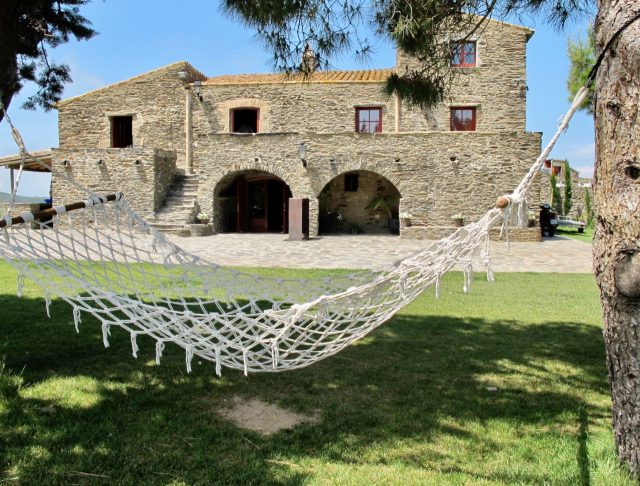
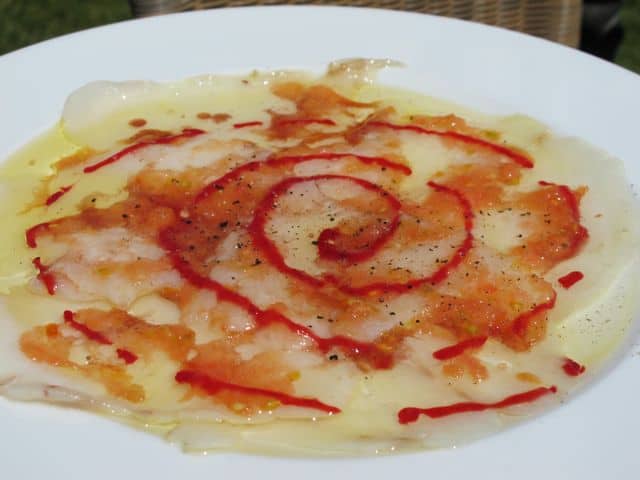
Port Lligat
Continue further to Port Lligat to visit Casa Dalí, the former residence of the great artist Salvador Dalí – this is a wondrous experience you shouldn’t miss.
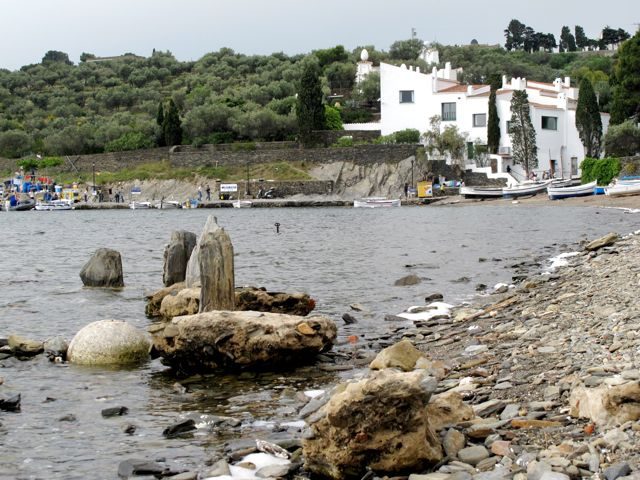
Another famous attraction in the area is the romanesque abbey of Sant Pere de Rodes near the town of Port de la Selva.
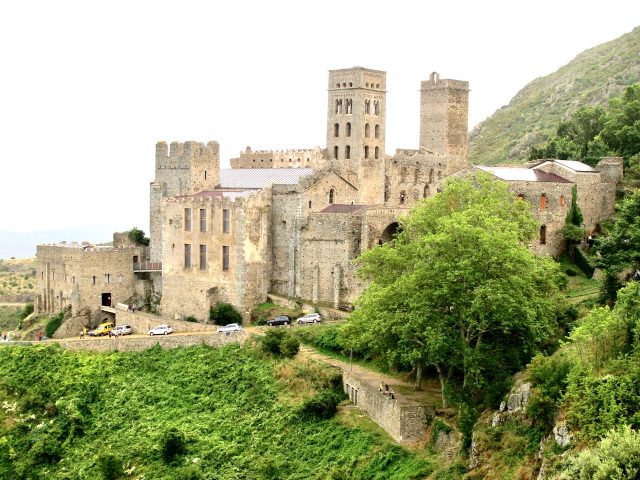
Inland to Figueres
From Cap de Creus, head west towards Figueres, the largest town in the area. Just off the N260 road is another gorgeous golf resort: Hotel Peralada Wine Spa and Golf. The village of Peralada, with its 13th century castle (open to visitors), makes for an interesting stop for its impressive armoury and library.
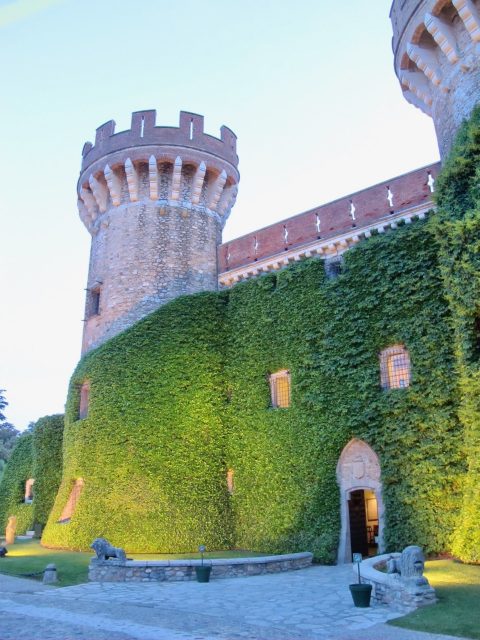

Figueres
Figueres, the birthplace of Salvador Dalí, is a popular touristic town primarily due to the Dalí Theatre Museum, which the great artist designed himself. I highly recommend a visit to this fascinating museum and the adjacent Jewels Collection. For lunch, restaurants I recommend include Restaurante Duran (a classic in Figueres frequented by Dalí himself) and El Lloc Cafe Bistrot.
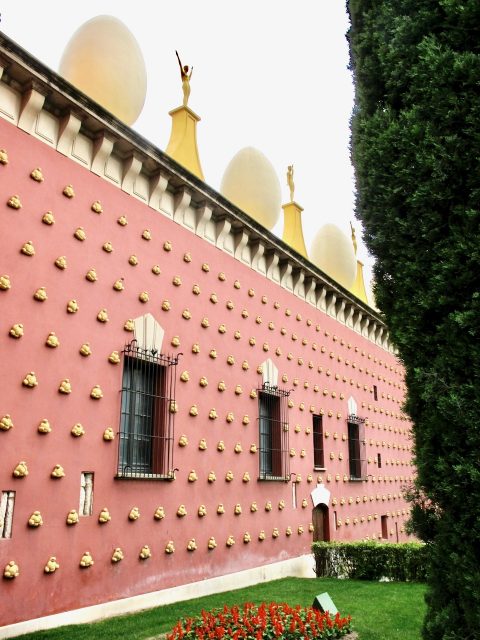

La Garrotxa to the Girona Pyrenees
The Pyrenees mountain range forms a natural border with France, rising to great heights further inland. This region is dotted with picturesque medieval towns, forests, low hills and ancient volcanoes that gradually make way for the mighty snow-capped peaks of the Girona Pyrenees.
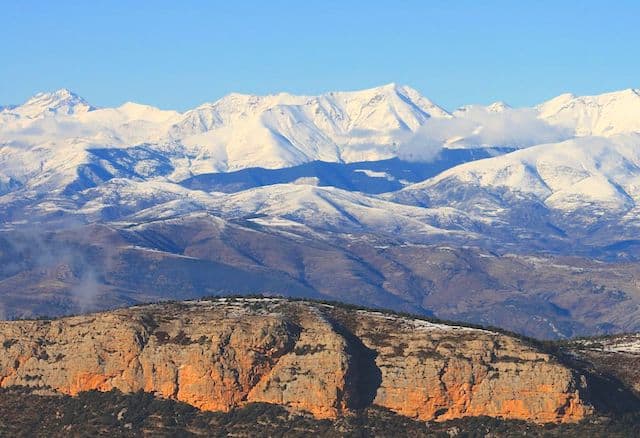
Besalú
Besalú is a stunning medieval town in the hills of the Garrotxa region. The first thing that will grab your attention as you approach the town is the magnificent 12th century Romanesque bridge over the Fluviá river. The bridge leads visitors into the town, with its arcaded streets, cobblestone alleys and squares.
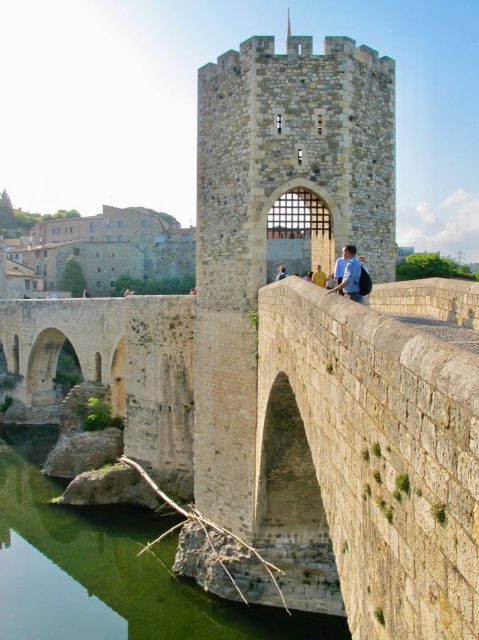
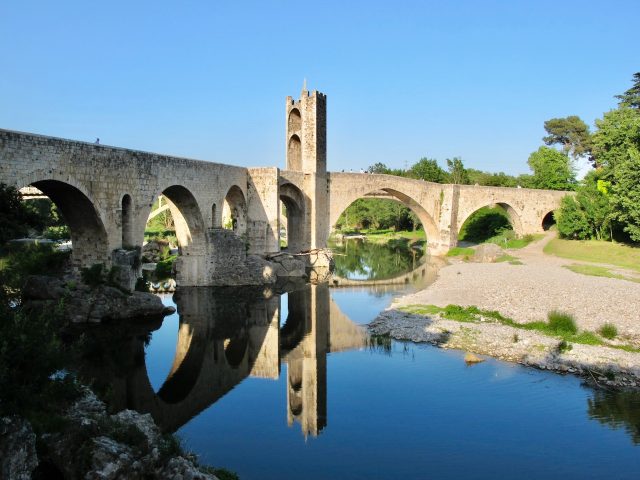
There’s a wonderful array of shops selling local produce and handicraft. Other historic monuments in the town include the 11th century Sant Pere church and 12th century Jewish bath (mikveh).
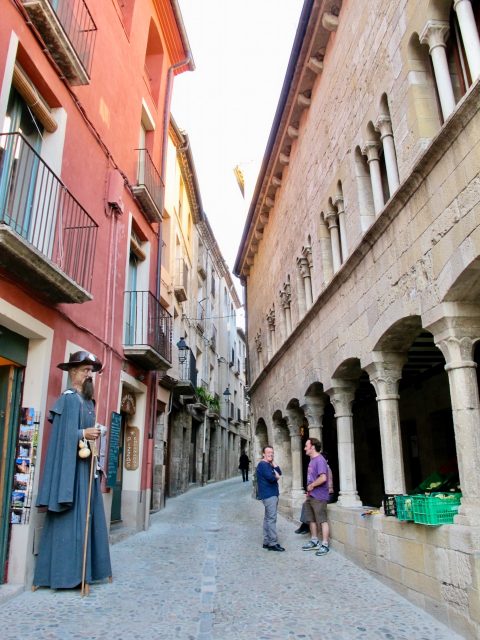
Castellfollit de la Roca
West of Besalú, on the A26 road to the La Garrotxa Volcanic Zone, you’ll pass the medieval village of Castellfollit de la Roca. Spectacularly perched on a basalt cliff that was formed by lava flows, this pretty village makes for a great photo stop.
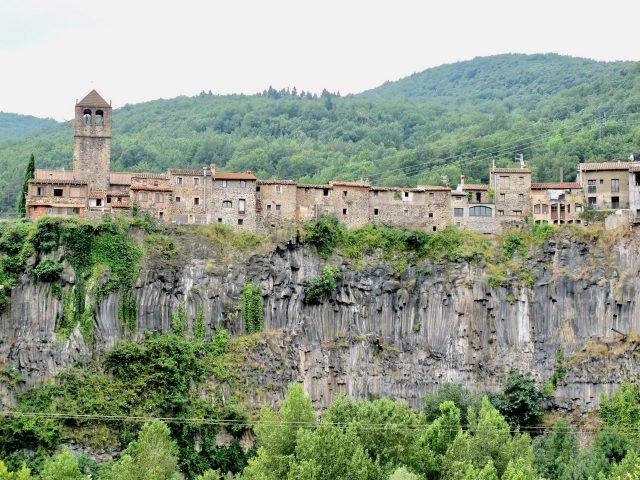
La Garrotxa volcanic zone
The La Garrotxa Volcanic Zone is a beautiful, forested area with 40 volcanic cones and ancient lava flows. You can hike up to the crater rim and into the crater but don’t expect a typical volcano (like Vesuvius or Etna). Instead, along the well-marked trails, you’ll find lush vegetation, different coloured rock surfaces and gorgeous views (don’t miss the viewpoint at Mirador Puig Rodó). The town of Olot is a good base from which to explore the area. I recommend staying at one of the converted farmhouses or cottages in the hills around Olot such as Casa Rural Mas Garganta. I also recommend going on a hot-air balloon flight over the La Garrotxa Volcanic Zone.
Search for accommodations in La Garrotxa.
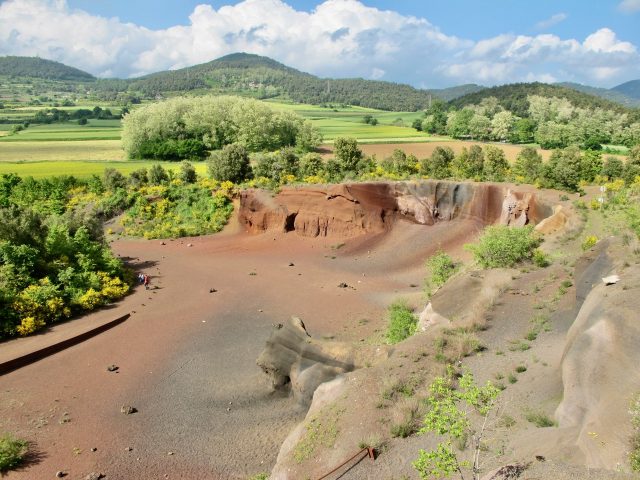
Santa Pau
Santa Pau is another medieval village in the Garrotxa region that I absolutely love. Located near the La Garrotxa volcanoes, Santa Pau is tiny but boasts gorgeous porticoes, alleys and arcades as well as a 15th century Gothic church. Moreover, this wonderfully atmospheric village is home to another of my favourite restaurants in Costa Brava: Cal Sastre.
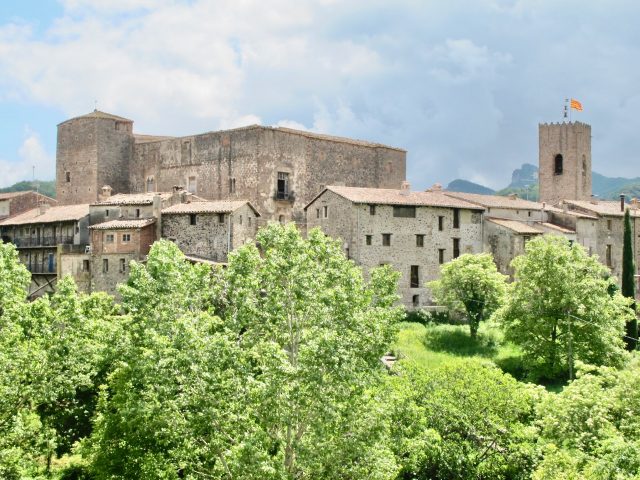
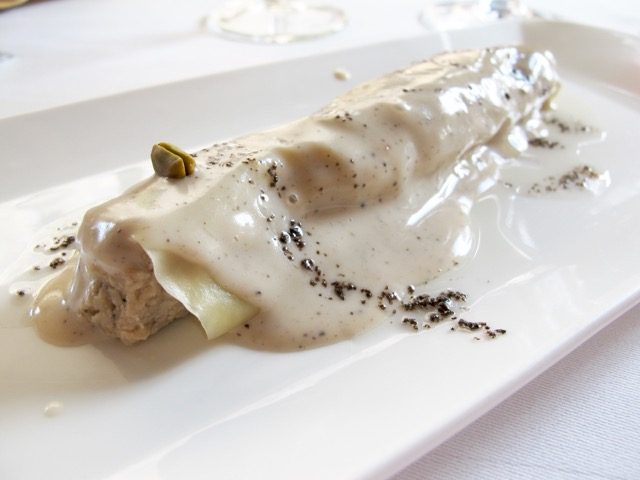
Ripoll
Ripoll lies to the west of the La Garrotxa Volcanic Zone and is famous for its magnificent Benedictine monastery, a true Romanesque gem. The Monastery of Santa María de Ripoll, founded around the 9th century, is considered to be one of the most important monastic centres in Catalonia.
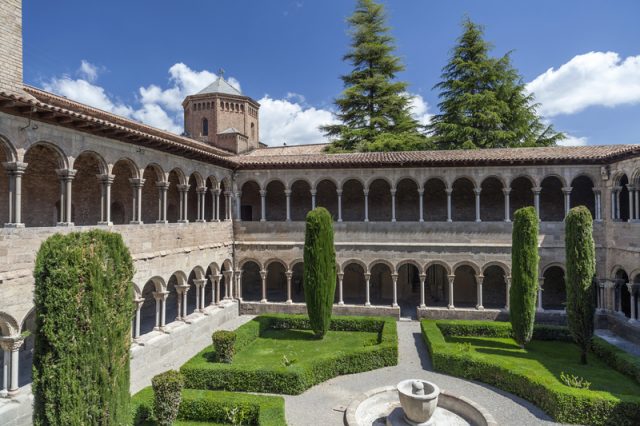
For those interested in more Romanesque art, continue to Sant Joan de les Abadesses, home to the Monastery of Sant Joan de les Abadesses (9th century), approximately 10km from Ripoll. The village, located on the banks of the River Ter, also has a gorgeous medieval bridge (in Gothic style) that’s worth a photo stop.

Girona Pyrenees
From Ripoll, follow the N260 road northwards. You’ll soon be surrounded by the breathtaking mountain landscapes of the Girona Pyrenees. This mountain region, with its glistening peaks, awe-inspiring granite surfaces, serene valleys and shimmering lakes, is popular in the winter for its skiing opportunities, and hiking in the summer months.
Search for accommodations in the Girona Pyrenees.
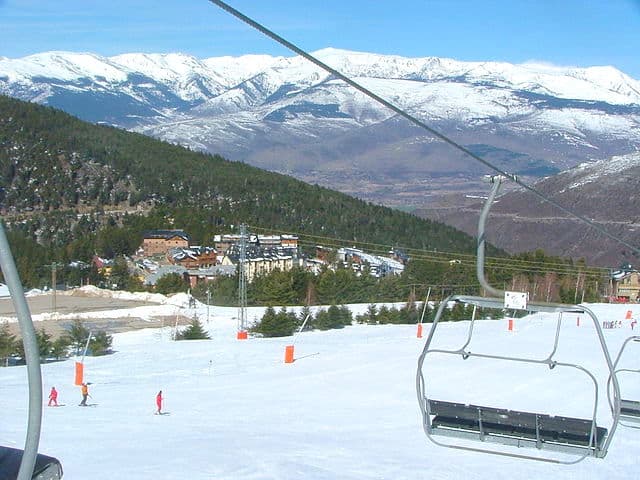
There are many spots to enjoy the magnificent mountain scenery such as the Cerdanya and Camprodon valleys, and the simply magical Vall de Núria. This area has the most popular ski resorts in Catalonia such as La Molina and Masella. In the summer, it’s a mecca for hikers!
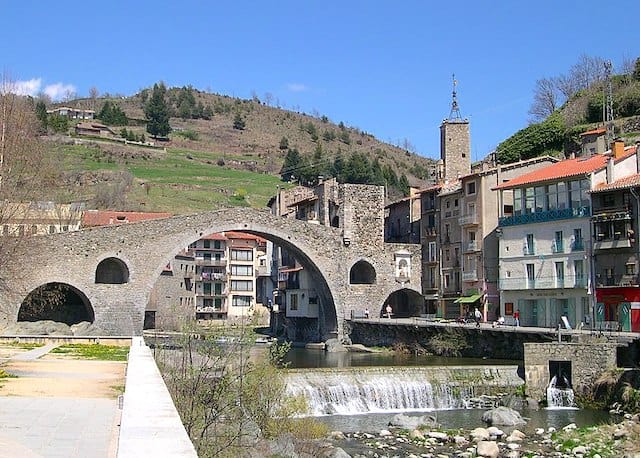
Beget
If you’re accustomed to winding roads, continue past Camprodon to the village of Beget. Often listed as one of the prettiest villages in Catalonia, Beget is a charming medieval village, and its location, tucked in a valley surrounded by thick vegetation, is gorgeous.
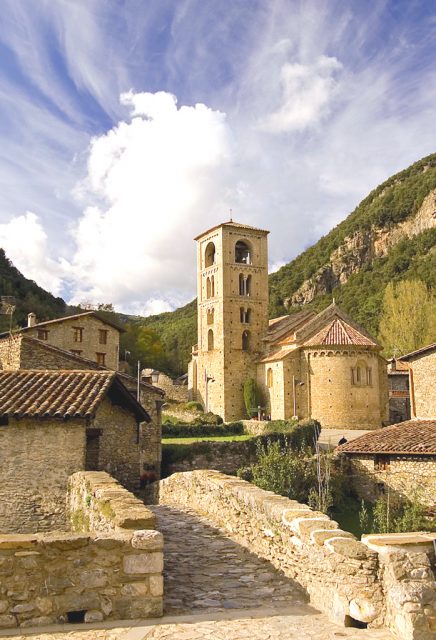
Vall de Núria
The Vall de Núria (Valley of Núria) is a stunning valley almost completely enclosed by imposing mountains, some almost 3,000m high. Popular as a getaway for nature enthusiasts, it also attracts pilgrims who come to visit the Shrine of Núria. Cars are not permitted in the valley. Instead, visitors take the scenic 12.5km-long Vall de Núria Rack Railway that connects Vall de Núria with Ribes de Freser and Queralbs. Check the Vall de Núria website for more info.
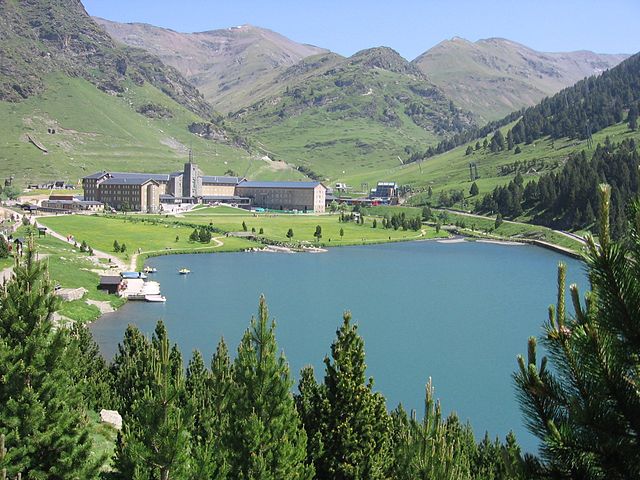
Puigcerdà
Further to the west, the town of Puigcerdà lies just a few kilometers from the border with France and is mainly used as a base for a myriad of mountain activities. This vibrant town has many restaurants, cafés and shops (centred around Plaza de Santa Maria), and a photogenic lake. The rooftop of the Bell tower offers beautiful views of the town and the mountains.
Search for accommodations in Puigcerdà.

Llívia
Cross the border into France from Puigcerdà, drive a further 1.5 kms, and you’ll find yourself back in Spain, in the little Catalan enclave of Llívia! Completely surrounded by France, Llívia is a charming medieval town with slate-roofed houses that’s great for a stroll and a meal at one of its excellent restaurants.

How to get to Costa Brava
Costa Brava lies in the northeast corner of Spain. The capital, Girona, is connected by trains from Barcelona (Estació Sants) and France (via Figueres). The Girona-Costa Brava Airport has connections with major cities in Europe (primarily operated by holiday and low-cost airlines). The closest international hub airport is Barcelona. From Barcelona Airport, it’s less than a two-hour drive to Costa Brava. There’s also a scheduled bus service from the airport to Blanes.
15-day ‘Best of Costa Brava’ self-drive itinerary
This 14 night/15 day self-drive itinerary takes you past the best places in Costa Brava as described above. If you’re flying into Barcelona or Girona, I recommend picking up a rental car upon arrival. Planning to visit Barcelona? Read my top ten things to do in Barcelona post.
You can start Your Costa Brava trip on the coast and follow the entire itinerary through to Girona or concentrate on 1-2 areas, depending on your interests or the length of your stay. I’ve included a suggested length of stay per place/area. The itinerary is as follows:
4 nights: Costa Brava coast. From Lloret de Mar, continue along the coast to your accommodation for 4 nights. Spend some time at the beach and the coastal towns, walk along the Cami de Ronda and explore the medieval villages of Baix Empordá. Suggested base: Llafranc, Calella de Palafrugell or inland in/around Pals or Peratallada.
2 nights: Cap de Creus. Continue up the coast past Roses to Cap de Creus. Suggested base: in/around Roses or Cadaqués. Wander around Cadaqués, hike in the hills, and visit Casa Dalí in Port Lligat and the Sant Pere de Rodes abbey.
3 nights: La Garrotxa. From Cap de Creus, continue to Figueres (visit the Dalí Theatre Museum) and on to La Garrotxa. Explore the medieval towns and hike in the La Garrotxa Volcanic Zone. Go on a day trip to Camprodon and Beget. Suggested base: Besalú, in/around Olot or Santa Pau.
3 nights: Girona Pyrenees. Head further into the Pyrenees, stopping at the Santa Maria de Ripoll monastery. Take the rack railway to Vall de Núria. Wander around Puigcerdà and have lunch in Llívia. Suggested base: in/around Ribes de Freser and/or Puigcerdà.
2 nights: Girona. Explore the medieval centre, walk along the old city walls and visit the Cathedral.
Route map
Car hire
Accommodation search
More information on Costa Brava
Visit the website of Costa Brava Girona Tourism for more information.

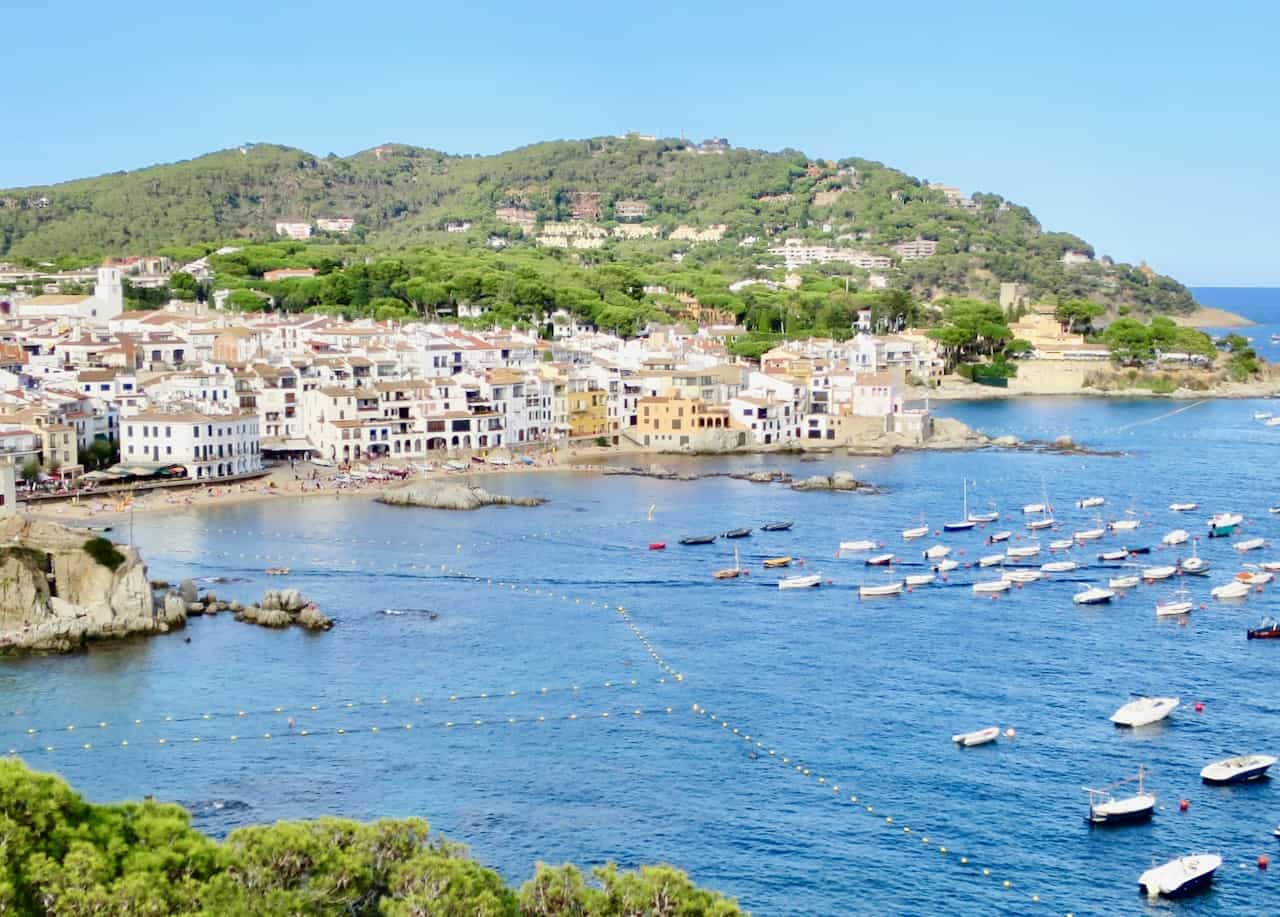
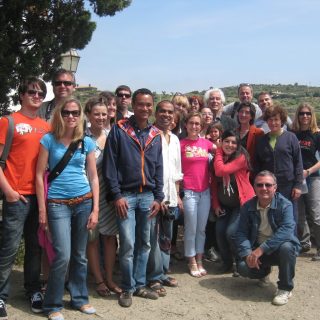
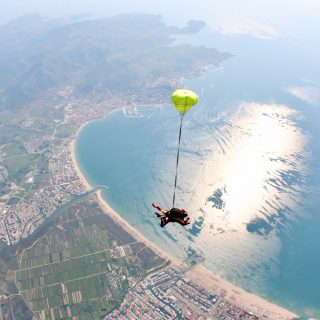
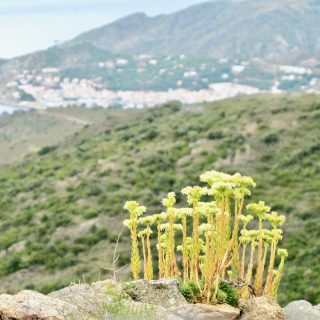
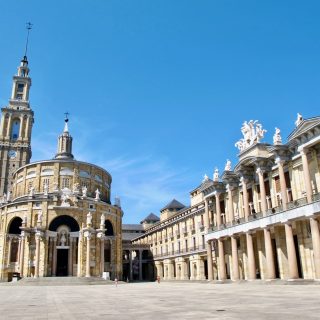






Very detailed post on Costa Brava. I bookmarked your website because I enjoy detailed writing and descriptive photographs. Girona, at the the confluence of four rivers and past multicultural habitations looks like an interesting city to visit.
[…] Guide to the best places to visit in Costa Brava on a self-drive itinerary July 9th, 2020 […]
[…] I filled my blog with content from previous trips, even publishing comprehensive travel guides on Costa Brava, Emilia Romagna and the Markermeer region near Amsterdam. When the lockdown was lifted in […]
[…] the Salvador Dali museums in Costa Brava, nothing is what it seems at first sight. The works of the great master first grab your attention […]
Looks like we missed a lot of this region when we drove through, but I LOVED Cadaques and the gorgeous town and beaches there. Thanks for all the info.
We did a much quicker tour through the region, but still enjoyed what we did get to see.
[…] out my guide to the best places to visit in Costa Brava on a road […]
[…] out my guide to the best places in Costa Brava to visit on a road […]
Great
[…] Read other Costa Brava posts on Velvet Escape or view the Velvet Escape Costa Brava guide. […]
[…] my best places to visit in Costa Brava guide which covers all the places in the map above (and […]
[…] The ultimate guide to Costa Brava […]
[…] The best of Costa Brava – the ultimate guideAn architecture walk in GrazA stroll around Alkmaar […]
[…] Check out my Costa Brava guide + self-drive itinerary […]
[…] Check out my Costa Brava guide + self-drive itinerary […]
[…] out my Best of Costa Brava […]
[…] Check out my guide to the best places to visit in Costa Brava! […]
[…] these towns and villages each have their own charm and attractions, making them interesting places to visit in Costa Brava. Due to the short distances, many of these medieval villages and towns can easily be explored by […]
[…] Check out my Ultimate Costa Brava Guide! […]